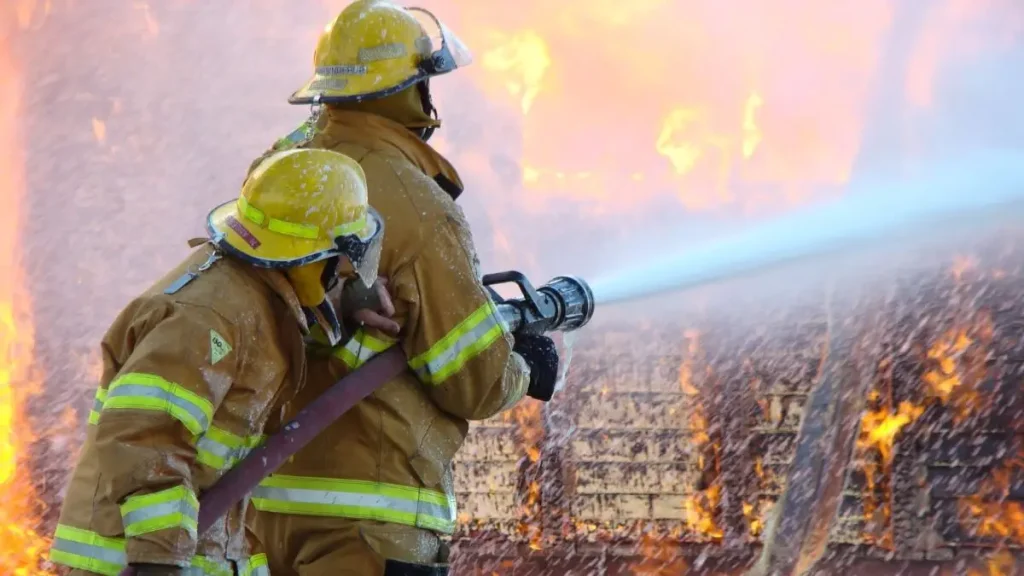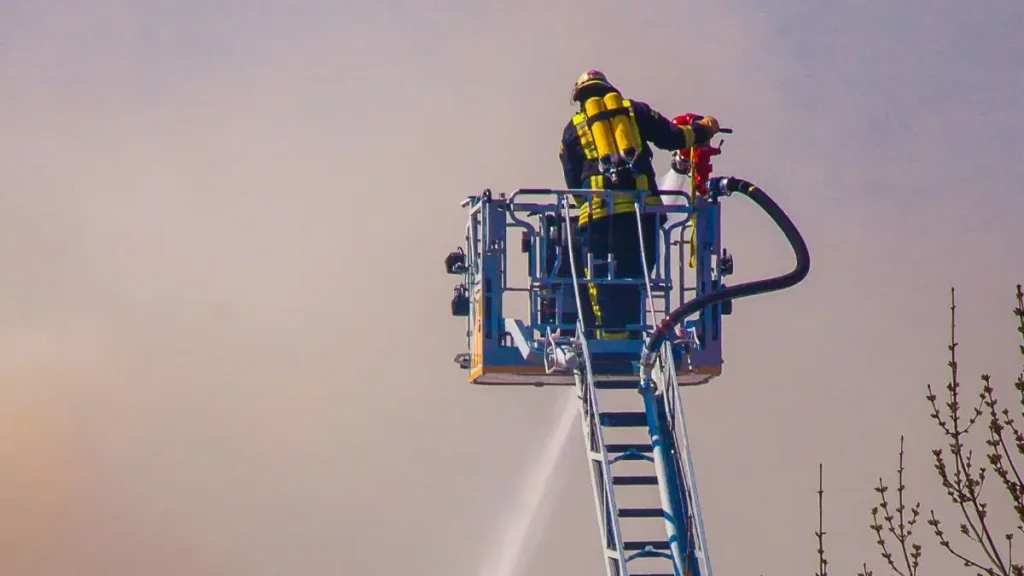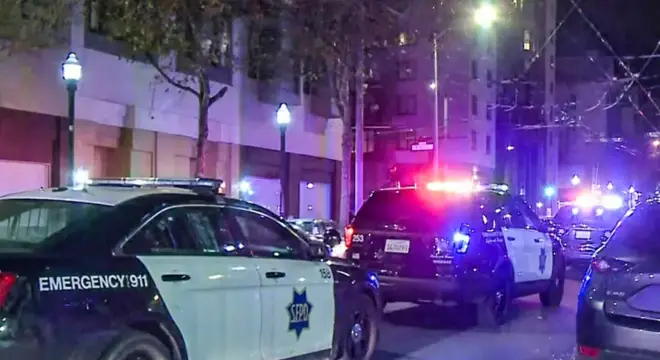85-Year-Old Woman Found Dead, Two Firefighters Hurt in NYC Home Fire
When I first read about the fire in College Point, it hit me in a way that numbers and headlines usually don’t. An 85-year-old woman — someone’s grandmother, neighbor, friend — lost her life inside her own home before sunrise on Monday. The blaze started just after 5 a.m. on 26th Avenue, and by the time firefighters brought it under control, two of them were hurt trying to save her.
I’ve covered a lot of fire stories over the years, but the quiet details in this one stayed with me — the early-morning cold, the smell of smoke drifting over Queens, the thought of someone waking up too late to escape. Seventy firefighters rushed in, doing what they always do: risking their lives for strangers.
You can almost picture it — the flashing lights reflecting off wet pavement, neighbors standing outside in disbelief. It’s a heartbreaking reminder of how quickly an ordinary home can turn into a deadly trap, especially for older residents living alone.
What would you do if a fire broke out while you were asleep? Do you know where your nearest smoke alarm is — or if it even works?
What Happened on That Early Morning in Queens?

According to The New York Post, the fire started on the first floor of a two-and-a-half-story home on 26th Avenue in College Point, Queens, just after 5 a.m. It was still dark out — that quiet hour when most of the city is asleep. By the time firefighters arrived, heavy smoke had already filled the lower level.
Inside, they found an 85-year-old woman unconscious and unresponsive. She was rushed to New York-Presbyterian Queens Hospital, but doctors couldn’t save her. Two firefighters also suffered minor injuries while battling the flames.
Seventy FDNY members were on scene, working against time and the kind of chaos that never truly becomes routine, no matter how many calls you’ve answered. The fire was finally brought under control by about 6:37 a.m.
Reading that, I couldn’t help but think about how fast everything unfolded — and how many fires like this start silently, in the same ordinary rooms we all live in.
FDNY’s Swift Response and the Weight They Carry
ABC7NY reported that more than a dozen units from across Queens responded within minutes. When I talk to firefighters, they often say the toughest part isn’t the danger — it’s the helplessness when someone doesn’t make it out in time.
In this case, crews entered through dense smoke and near-zero visibility. They had to navigate narrow stairways and an old layout — typical of many College Point homes built decades ago. Two firefighters were hurt during the rescue effort, though thankfully their injuries were minor.
If you’ve ever seen an FDNY team in action, you know it’s pure instinct — everyone knows exactly where to be, what to grab, when to push forward or pull back. But every call like this one leaves a mark.
I always try to remind readers that behind every headline like “Two Firefighters Injured,” there’s a story of exhaustion, risk, and sometimes grief carried quietly back to the firehouse.
Why This Fire Hits Harder Than Most?
There’s something deeply unsettling about losing an older neighbor in a house fire. People over 65 make up a large share of home-fire fatalities, according to the National Fire Protection Association. Mobility issues, slower response times, or simple trust that “it won’t happen to me” — all play a role.
In College Point, that reality turned personal. Many homes there were built in the 1940s or earlier — tight staircases, wooden interiors, older wiring. Add in early-morning hours, and you’ve got the kind of conditions firefighters dread.
It makes you realize how fragile that sense of safety really is. A working smoke alarm, an accessible exit, even a phone close to bed — they all matter when seconds decide everything.
What Investigators Are Looking For?
Right now, fire marshals are combing through the debris to figure out what sparked the flames. Officials haven’t said whether it was electrical, heating-related, or something else entirely.
As of the latest update, the FDNY hasn’t released the woman’s name, pending family notification. They’re also checking for working smoke detectors and any signs of structural failure.
I’ve seen these investigations take weeks, sometimes months. But each one teaches the department something new — a faulty outlet design, an appliance recall, a pattern that could prevent the next tragedy.
For now, all we know is that the cause remains under investigation — but the lessons are already there for anyone paying attention.
Investigators often uncover surprising causes — like in a Tucson mobile home fire where faulty wiring turned out to be the main culprit.
The Larger Picture — NYC’s Fire Pattern This Fall

This isn’t an isolated event. Over the past few months, New York City has seen a spike in residential fires across multiple boroughs — some fatal, many caused by the same old issues: space heaters, wiring, cooking mishaps.
Queens, in particular, has been hit hard. Its mix of old homes, narrow streets, and aging infrastructure creates a perfect storm when something goes wrong.
What worries me most is how predictable it’s all become. The same preventable causes, the same heartbreak, the same headlines. And yet, most of us still haven’t checked our smoke alarms or mapped out a simple escape plan.
If you’re reading this from anywhere in the city, take five minutes tonight. Test your alarm. Look around your home and imagine how you’d get out if the lights went black and the air turned thick with smoke.
That one small step could be the reason your story doesn’t end up in tomorrow’s paper.
Just earlier this month, an overnight fire in Virginia left residents shaken, though thankfully no one was hurt — another reminder of how unpredictable home fires can be, no matter where you live.
Simple Safety Habits That Could Save a Life
Whenever I write about fires like this, I can’t help but think about how easily some of them could be prevented. Most fatal home fires start from ordinary things — an overloaded socket, an unattended pan, a space heater too close to a blanket.
If you live in New York, you already know how small apartments can be. A tiny spark doesn’t need much to spread. So here’s what I’ve learned over the years — and what firefighters keep repeating after every tragedy:
- Test your smoke alarms once a month. Replace the batteries twice a year.
- Keep exits clear, especially if you live with seniors or small children.
- Never leave stoves or heaters unattended, even for “just a minute.”
- Have a fire escape plan — and actually walk through it once.
- For older residents: consider installing bedroom smoke alarms and night lights for quick exits.
It’s not about paranoia; it’s about giving yourself time. Because in a fire, time is the only thing you can’t buy back.
If you like staying informed about real home safety incidents and practical prevention tips, there’s a growing WhatsApp community where verified updates on fire safety and local incidents are shared regularly. It’s become a reliable space for residents who want to stay one step ahead.
What Happens Next in the Investigation?
The next few weeks will bring answers — or at least, that’s what everyone hopes. Fire marshals will release their findings once the debris is analyzed. Investigators will check for any electrical malfunctions, appliance failures, or flammable materials near ignition points.
If it turns out to be a preventable cause, it might trigger new local inspections or safety advisories. And if it was something unavoidable — a sudden short circuit, maybe — it’ll still serve as a lesson for the rest of us.
I’ve covered cases where one fire led to new city rules — better building inspections, stricter codes for landlords, awareness campaigns for elderly care. Let’s hope this one sparks something similar, not just sorrow.
Until then, all we can do is stay alert, stay aware, and make sure we’re not the next headline.
In a similar case, two homes in Tennessee were damaged in a blaze that started from something as small as a faulty electrical line — proof that prevention really does start with small habits.
A Quiet Reminder We Shouldn’t Ignore
Every home carries its own story — and its own risks. Fires don’t wait for perfect timing or perfect people; they happen in ordinary moments, to people who never thought it could happen to them.
This story isn’t just about an elderly woman in Queens. It’s about all of us — our parents, our grandparents, our own late-night habits. If this tragedy makes even one reader check their smoke alarm tonight, it’s already made a difference.
So before you close this tab, take a breath. Look around your home. Think about who might need your help if something went wrong. Would you be ready?
You can also explore more real fire reports and safety coverage on Build Like New— stories that go beyond headlines and help you learn what really matters when it comes to home safety.
Disclaimer: Details in this article are based on official reports and local news sources available at the time of publication. Information may change as the FDNY investigation continues. Readers are advised to follow verified city updates for the latest fire safety and incident information.


